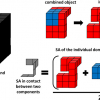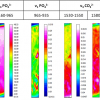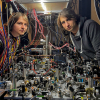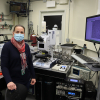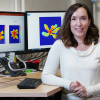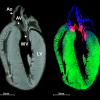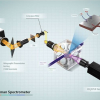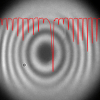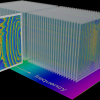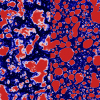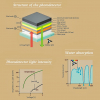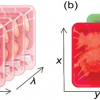Imaging News
Serial sectioning of pharmaceutical tablets with spectral mapping has enabled full visualisation of the three-dimensional (3D) microstructure of a tablet system to be achieved.
Synchrotron FT-IR microspectroscopy has been used to study the side effects of typical tooth whitening treatments, based on oxidation, compared to a new treatment developed by the authors through reduction.
The authors of a new review article believe that they have found a new and better way to categorise deep-learning-based spectral imaging and review it.
New machine-learning methods based on laboratory soil hyperspectral data can supply estimates of soil organic carbon with the same accuracy as lab-based methods.
A new algorithm allows real-time reconstruction of images that combine optical spectral and magnetic resonance imaging data.
In its largest order in the private space sector, ABB will supply multispectral imaging systems to Canadian data and analytics company EarthDaily Analytics, which will be used to provide near real-time information about natural and human-caused change across the planet.
Researchers from the University of Warsaw have built the first quantum processor in Poland and are putting it to use in spectroscopy. They’ve demonstrated how quantum information processing can efficiently provide information on matter hidden in light.
Canadian hyperspectral imaging satellite company, Wyvern, has received an investment from Sustainable Development Technology Canada.
Synchrotron light is being used with FT-IR imaging to investigate the role of myelin in brain ageing.
Hyperspectral imaging has been shown to detect stress when a plant takes up cadmium, which may lead to methods to keep the heavy within the soil and avoid potential pollution.
Emberion, a partner in the Graphene Flagship, has raised €6 million in funding to further develop their infrared imaging business including vis-SWIR cameras.
Researchers from the Medical University of South Carolina have used mass spectrometry imaging to study the efficacy and distribution of injected biomaterials for the treatment of heart attack.
Researchers improve their scientific understanding of heterogeneous catalysis by imaging the gas just above the surface of the catalyst.
Quantum mechanically entangled light particles allow a glimpse into previously invisible wavelength ranges, thus bringing about new possibilities for imaging techniques, microscopy and spectroscopy.
The First Student meeting of the Coblentz Society and NE & NY Society for Applied Spectroscopy (SAS) Sections invites submissions from PhD students from across the world working in all fields of vibrational spectroscopy.
Scientists at the Max-Planck Institute of Quantum Optics have moved holography forward by implementing it with optical frequency combs.
The two foods both derive from duck livers, and are similar in overall structure and their differing fat distribution, as determined by CARS, provides a window into how fat affects texture.
The 2021 winner of the Karl Norris Award of the International Council for Near Infrared Spectroscopy is Professor Yukihiro Ozaki.
Researchers at Empa in Switzerland have developed a simple device to visualise SWIR radiation.
Spectral imaging can be used as a non-destructive tool to quickly identify poultry products beyond their recommended “use-by” date and predict the number of days poultry products have been stored.

